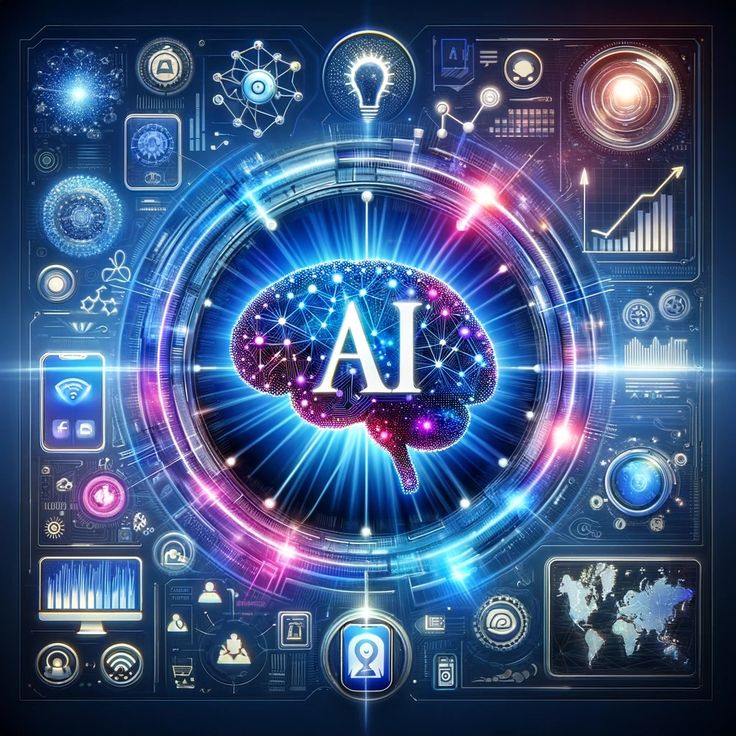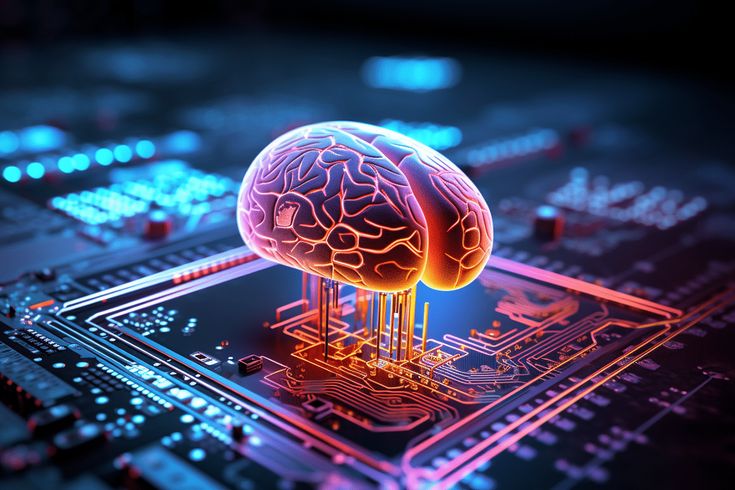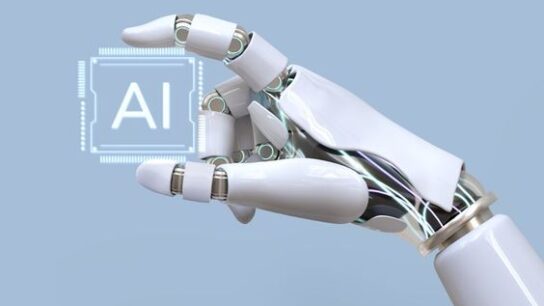Artificial Intelligence (AI) has transitioned from a futuristic concept to a practical tool that is reshaping industries, enhancing business operations, and even changing the way we live. As we progress through AI in 2024, AI continues to evolve, becoming more sophisticated and widespread across multiple sectors. This article explores the current state of AI, its transformative impact on key industries, the ethical considerations surrounding its use, and predictions for its future.

1. Introduction to AI in 2024
In 2024, Artificial Intelligence is no longer a concept limited to research labs or science fiction novels. It has integrated into our everyday lives, influencing how businesses operate, how products are developed, and how services are delivered. From virtual assistants in our smartphones to AI-driven analytics in large corporations, AI’s footprint is unmistakable.
This article aims to provide a comprehensive overview of Ai in 2024’s current state, how it’s transforming various industries, the ethical challenges it presents, and the exciting possibilities it holds for the future.
2. The Evolution of AI: A Brief History
AI has a long history, dating back to the 1950s when the term was first coined by John McCarthy. Early AI research focused on problem-solving and symbolic methods, leading to the development of the first AI programs in the 1950s and 60s. Over the decades, AI has evolved from simple algorithms to complex systems capable of learning and making decisions.
The rise of machine learning in the 1980s marked a significant turning point for AI. Machine learning, a subset of AI, allows computers to learn from data without being explicitly programmed. This development paved the way for advancements in natural language processing, computer vision, and robotics.
The advent of deep learning in the 2010s further accelerated AI’s growth. Deep learning models, such as neural networks, mimic the human brain’s structure and function, allowing computers to recognize patterns, understand language, and even generate content. This breakthrough technology has enabled AI to tackle more complex tasks, such as facial recognition, autonomous driving, and real-time language translation.
As we move into 2024, AI has become an essential tool in numerous fields, driving innovation and transforming industries. The following sections will explore the latest AI technologies and trends shaping our world.
3. Key AI Technologies and Trends Ai in 2024

Machine Learning
Machine learning continues to be the backbone of AI, powering applications ranging from predictive analytics to personalized recommendations. Ai In 2024, machine learning models have become more efficient, capable of processing vast amounts of data in real-time. These models are being used in industries like finance, healthcare, and marketing to make more informed decisions, reduce costs, and improve customer experiences.
Natural Language Processing (NLP)
Natural Language Processing (NLP) has seen significant advancements, enabling machines to understand, interpret, and generate human language more accurately than ever before. In 2024, NLP is being used in various applications, including chatbots, virtual assistants, and content generation tools. These tools are helping businesses improve customer service, automate routine tasks, and engage with their audiences more effectively.
Computer Vision Ai In 2024
Computer vision technology, which enables machines to interpret and make decisions based on visual data, has also seen remarkable growth. In 2024, computer vision is being used in healthcare for medical imaging analysis, in retail for automated checkout systems, and in manufacturing for quality control. The ability of machines to “see” and understand the world visually is opening up new possibilities across multiple sectors.
Generative AI
Generative AI, a subset of machine learning, has gained immense popularity in recent years. Generative models, like GPT-4, can create new content, such as text, images, and music, based on existing data. In 2024, generative AI is being used in creative industries, marketing, and product design. These models are enabling businesses to produce high-quality content quickly and efficiently, saving time and resources.
4. AI’s Impact on Major Industries
Healthcare
AI is revolutionizing healthcare by improving diagnostics, personalizing treatment plans, and streamlining administrative processes. In 2024, AI-powered tools are being used to analyze medical images, predict patient outcomes, and assist in surgery. AI-driven drug discovery is also speeding up the development of new medications, making healthcare more efficient and accessible.
For example, AI algorithms can now analyze medical images with high accuracy, detecting early signs of diseases like cancer that might be missed by human eyes. These tools are not only enhancing the diagnostic process but also enabling earlier interventions, leading to better patient outcomes.
Finance
The financial industry is leveraging AI for fraud detection, risk management, and algorithmic trading. In 2024, AI is helping financial institutions analyze large volumes of data in real-time, identify patterns, and make more informed decisions. AI-driven chatbots and virtual assistants are also improving customer service, providing personalized financial advice and support.
AI’s ability to process and analyze vast amounts of financial data quickly is particularly valuable in risk management. By identifying anomalies and patterns in real-time, AI can help prevent fraud and mitigate risks before they escalate.
Retail
Retailers are using AI to enhance the shopping experience, optimize inventory management, and improve customer service. In 2024, AI-driven recommendation systems are helping businesses understand customer preferences and deliver personalized product suggestions. AI is also being used to optimize supply chains, reducing waste and ensuring that products are available when and where customers need them.
For instance, AI-powered chatbots are being used to provide instant customer support, answer questions, and guide customers through their shopping journey. These tools are improving customer satisfaction and driving sales.
Manufacturing
AI is transforming manufacturing by automating processes, reducing errors, and increasing productivity. In 2024, AI-powered robots are being used on assembly lines to perform repetitive tasks with precision and speed. Predictive maintenance, powered by AI, is also helping manufacturers reduce downtime and extend the life of machinery.
In addition to improving efficiency, AI is also enabling manufacturers to produce higher-quality products. AI-driven quality control systems can detect defects in real-time, ensuring that only the best products reach the market.
Education
AI is reshaping education by creating personalized learning experiences for students.Ai In 2024, AI-driven platforms are assessing students’ strengths and weaknesses, tailoring lessons to meet their individual needs. These tools are helping educators provide more effective instruction and support, improving student outcomes.
For example, AI-powered tutoring systems can adapt to each student’s learning style, providing personalized feedback and guidance. These systems are particularly beneficial for students who need extra help, enabling them to learn at their own pace.
Entertainment
The entertainment industry is also being transformed by AI In 2024, AI is being used to create content, such as music, movies, and video games. Generative AI models are enabling artists and creators to produce new and innovative works quickly and efficiently. AI is also being used to analyze audience preferences, helping creators tailor content to meet demand.
For instance, AI-powered recommendation systems are helping streaming services suggest content based on viewers’ preferences, enhancing the user experience and increasing engagement.
Agriculture
AI is making agriculture more efficient and sustainable. In 2024, AI-powered tools are being used to monitor crops, optimize irrigation, and predict yields. These tools are helping farmers make more informed decisions, reduce waste, and improve productivity.
For example, AI-driven drones can monitor crop health in real-time, identifying areas that need attention and enabling farmers to take action quickly. These tools are helping to ensure that crops are healthy and yields are maximized.
5. The Ethical and Social Implications of AI In 2024.

Data Privacy
As AI becomes more pervasive, concerns about data privacy are growing. AI systems rely on large amounts of data to function effectively, raising questions about how this data is collected, stored, and used. In 2024, there is an increasing focus on ensuring that AI systems are designed with privacy in mind and that data is handled responsibly.
For instance, businesses are being encouraged to adopt privacy-by-design principles, ensuring that privacy is built into AI systems from the outset. This approach helps to protect users’ personal information and builds trust in AI technologies.
Job Displacement
One of the most significant concerns surrounding AI is its potential to displace jobs. As AI systems become more capable of performing tasks traditionally done by humans, there is a risk that some jobs may become obsolete. In 2024, discussions about the future of work are focusing on how to retrain and upskill workers to ensure they remain relevant in an AI-driven economy.
For example, governments and businesses are investing in education and training programs to help workers transition to new roles that require different skills. These programs are crucial for ensuring that the workforce is prepared for the changes brought about by AI.
AI Bias and Fairness
AI systems are only as good as the data they are trained on, and if that data is biased, the AI system will also be biased. In 2024, there is a growing recognition of the need to address bias in AI systems to ensure they are fair and equitable. Efforts are being made to develop AI systems that are transparent and accountable, and that do not perpetuate existing inequalities.
For example, researchers are working on developing methods for detecting and mitigating bias in AI systems. These methods are helping to ensure that AI is used in a way that is fair and just.
Regulation and Governance
As AI continues to advance, there is a need for regulation and governance to ensure that it is used responsibly. In 2024, governments and international organizations are working on developing frameworks for regulating AI, addressing issues such as data privacy, bias, and the ethical use of AI.
For instance, new laws are being introduced that require companies to be transparent about how they use AI and to ensure that their AI systems are fair and accountable. These regulations are helping to build public trust in AI and to ensure that it is used in a way that benefits society.
6. Future Predictions: What’s Next for AI?
AI in Smart Cities
In the coming years, AI is expected to play a crucial role in the development of smart cities. These cities will use AI to manage resources more efficiently, improve public services, and enhance the quality of life for residents. For example, AI could be used to optimize traffic flow, reduce energy consumption, and manage waste more effectively.
Autonomous Vehicles Ai In 2024
Autonomous vehicles are another area where AI is expected to have a significant impact. In 2024, AI-driven cars are already being tested on roads, and it is expected that fully autonomous vehicles will become more common in the coming years. These vehicles will use AI to navigate, avoid obstacles, and make decisions in real-time, reducing the risk of accidents and improving safety.
AI in 2024 Climate Change Solutions
AI is also expected to play a key role in addressing climate change. In 2024, AI is being used to analyze climate data, model the impact of different interventions, and develop strategies for reducing carbon emissions. AI-driven tools are also being used to optimize renewable energy sources, such as wind and solar power, making them more efficient and cost-effective.
The Role of AI in 2024 Global Development
AI has the potential to drive global development by improving access to education, healthcare, and economic opportunities in developing countries. In 2024, AI-driven initiatives are helping to bridge the gap between developed and developing countries, providing access to resources and services that were previously out of reach.
For example, AI-powered platforms are being used to provide remote education in areas with limited access to schools, and AI-driven healthcare tools are helping to improve health outcomes in underserved communities.
7. Conclusion: Embracing AI for a Better Tomorrow
As we look to the future, it is clear that AI will continue to play a significant role in shaping our world. While there are challenges to be addressed, the potential benefits of AI are immense. By embracing AI and using it responsibly, we can create a better, more equitable, and sustainable future for all.
The key to achieving this vision lies in collaboration between governments, businesses, and individuals. By working together, we can harness the power of AI to drive innovation, improve lives, and solve some of the most pressing challenges facing our world today.





[…] For More Ai information Click Here […]